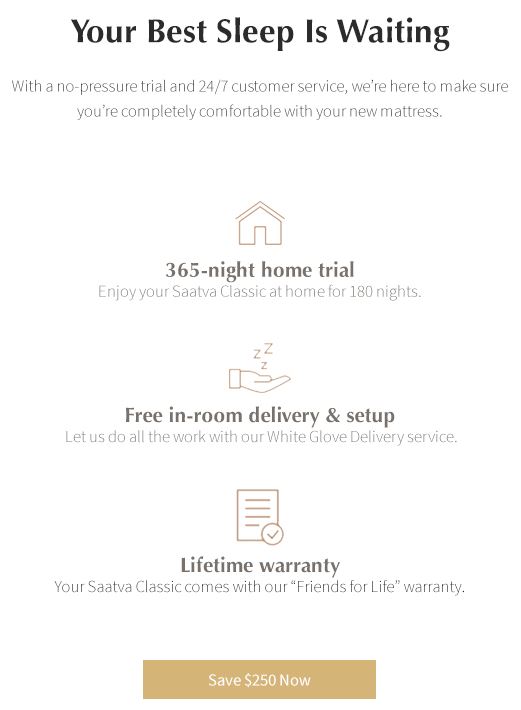Health Benefits of Different Mattresses
A good night’s sleep is integral to our overall health and well-being. The type of mattress we use plays a crucial role in determining the quality of our sleep. Over the years, various mattress types have been developed, each with its own set of health benefits. Let’s delve into some popular mattress types and the health benefits they offer:
1. Memory Foam Mattresses
- Pressure Point Relief: Memory foam contours to the body, distributing weight evenly and reducing pressure on joints.
- Spinal Alignment: Helps maintain the spine’s natural curve by adapting to the body’s shape.
- Hypoallergenic: Resistant to dust mites and allergens, making it a good choice for those with allergies.
- Motion Isolation: Absorbs movement, ensuring that one person’s movements don’t disturb another sleeper.
2. Latex Mattresses
- Natural Materials: Often made from natural latex, making them eco-friendly and devoid of harmful chemicals.
- Resilience: Offers a firm yet buoyant support that can be beneficial for back health.
- Breathability: Natural latex allows for good air circulation, preventing overheating.
- Hypoallergenic & Antimicrobial: Resistant to mold, mildew, and dust mites.
3. Innerspring (Coil) Mattresses
- Firm Support: Provides a solid support base, which can be beneficial for those with back issues.
- Cooler Sleep: The space between coils allows for better air circulation, reducing the chances of overheating.
- Bounce: The spring construction offers more bounce, which some sleepers prefer.
4. Hybrid Mattresses
- Versatility: Combines the benefits of memory foam or latex with innerspring coils, offering a balance between comfort and support.
- Breathability: The coil layer promotes airflow, while the foam or latex layer provides contouring and pressure relief.
- Motion Isolation: The foam or latex layers can absorb movement, reducing disturbances from a partner’s movements.
5. Adjustable Air Mattresses
- Customizable Firmness: Allows users to adjust the firmness level to their liking, which can be especially beneficial for couples with different preferences.
- Pain Relief: By adjusting the firmness, users can achieve optimal spinal alignment and pressure point relief.
- Durability: With proper care, air mattresses can be long-lasting since any wear or sag can be mitigated by adjusting the air level.
6. Waterbeds
- Even Weight Distribution: The water in the mattress distributes weight evenly, which can reduce pressure points.
- Temperature Control: Some waterbeds come with heaters, allowing users to adjust the temperature for a comfortable sleep environment.
- Therapeutic Uses: Historically, waterbeds have been used for therapeutic purposes, especially for bedridden patients, to reduce bedsores.
7. Gel-Infused Memory Foam Mattresses
- Cooler Sleep: The gel helps in distributing heat, making it cooler than traditional memory foam mattresses.
- Pressure Point Relief: Like traditional memory foam, it offers excellent contouring and support.
- Motion Isolation: Absorbs movement, ensuring minimal disturbance from a partner’s movements.
Conclusion
Choosing the right mattress is a personal decision that should take into account individual health needs, sleep preferences, and any specific ailments or conditions. It’s always recommended to consult with healthcare professionals, particularly for those with chronic pain or other medical conditions, when selecting a mattress. The right choice can make a significant difference in sleep quality, overall comfort, and health.
Downsides of Different Mattresses
While mattresses offer various health benefits, each type also comes with potential drawbacks. Understanding these downsides can help individuals make informed decisions that align with their unique needs and preferences. Here’s a breakdown of the cons associated with popular mattress types:
1. Memory Foam Mattresses
- Heat Retention: Traditional memory foam tends to retain heat, potentially leading to a warmer sleep experience.
- Off-Gassing: New memory foam mattresses might release volatile organic compounds (VOCs), leading to a distinct odor.
- Initial Feel: Some people find memory foam too firm initially, though it softens with body heat.
- Limited Mobility: The contouring effect might make it harder for some people to change positions or get out of bed.
2. Latex Mattresses
- Weight: Latex mattresses can be heavy, making them challenging to move or adjust.
- Cost: Natural latex mattresses tend to be more expensive than other types.
- Latex Allergies: While rare, some people may be allergic to natural latex.
- Firmness: Some users find latex mattresses too firm for their liking.
3. Innerspring (Coil) Mattresses
- Durability: Over time, the coils can wear out, leading to sagging or unevenness.
- Noise: Aging springs can become noisy, especially when moving on the bed.
- Limited Contouring: Might not provide the same level of contouring or pressure relief as foam or latex.
- Motion Transfer: Might not absorb motion as effectively as other mattress types.
4. Hybrid Mattresses
- Cost: Combining materials often results in a higher price point.
- Weight: The combination of springs and foam/latex makes hybrid mattresses heavy.
- Edge Support: Some hybrid mattresses might lack firm edge support, leading to a feeling of “rolling off” the bed.
5. Adjustable Air Mattresses
- Maintenance: Requires periodic adjustments and can be prone to punctures or mechanical failures.
- Uneven Surfaces: Over time, some sections might deflate more than others, leading to an uneven sleep surface.
- Noise: The air pumps used to adjust firmness can be noisy.
- Cost: High-quality adjustable air mattresses with multiple features can be expensive.
6. Waterbeds
- Maintenance: Requires regular care to avoid punctures or leaks.
- Motion Transfer: Movement can create waves in the bed, potentially disturbing a sleeping partner.
- Weight: Filled waterbeds are extremely heavy, making them difficult to move or adjust.
- Temperature: Can feel cold without a heater and might lead to increased energy costs if consistently heated.
7. Gel-Infused Memory Foam Mattresses
- Durability Concerns: The gel infusion might break down over time, affecting the mattress’s cooling properties.
- Cost: Typically more expensive than traditional memory foam mattresses.
- Limited Cooling: While cooler than traditional memory foam, it might still retain more heat than innerspring or latex mattresses.
Conclusion
When shopping for a mattress, it’s essential to consider both the benefits and the downsides. Taking the time to understand these factors, combined with personal preferences and any specific health or sleep needs, can guide individuals toward the most suitable mattress choice. Testing mattresses in-store and reviewing return policies can also help ensure satisfaction with the final selection.
How Often Should You Change Your Mattress?
The lifespan of a mattress varies depending on its type, quality, usage, and maintenance. However, as a general guideline, most experts recommend changing a mattress every 7 to 10 years. Here are some factors to consider:
1. Type of Mattress
Different mattresses have different lifespans:
- Innerspring: Typically lasts 7-10 years. The coils can lose their springiness over time.
- Memory Foam: Can last 10-15 years, depending on the foam’s density and quality.
- Latex: Known for its durability, a high-quality latex mattress can last up to 15 years or more.
- Hybrid: Combining innerspring and foam or latex, these usually have a lifespan of around 7-10 years.
- Waterbeds: Generally last between 7-10 years.
- Air Mattresses (permanent beds, not temporary solutions): Can last around 8-10 years, but mechanical parts might need replacement earlier.
2. Usage
A mattress used every night may wear out faster than a guest bed that’s only used occasionally. Similarly, children’s mattresses might not experience as much wear and tear as those used by adults.
3. Signs of Wear and Tear
Regardless of its age, if a mattress shows significant signs of wear and tear, it may be time to replace it. Indications include:
- Sagging or indentations: These can affect spinal alignment and overall sleep quality.
- Lumps: Uneven fill or wear can cause discomfort.
- Noisy Springs: In innerspring mattresses, this can indicate the coils are worn out.
4. Comfort Level
As mattresses age, they may not offer the same level of comfort and support. If you’re waking up with stiffness, pain, or you feel better rested after sleeping on a different bed, it might be time for a change.
5. Allergies
Over time, mattresses can accumulate dust mites, mold, and other allergens, especially if they’re not regularly cleaned or if they’re in a humid environment. If you’re experiencing increased allergy symptoms, it might be due to your mattress.

6. Manufacturer’s Warranty
Many mattresses come with warranties that last 10 years, which can be a good indicator of the expected lifespan of the product. However, always read the warranty’s terms and conditions, as specific damages or wear might not be covered.
Conclusion
While the 7-10 year guideline is a good general rule, it’s essential to pay attention to your mattress’s condition and your own comfort. Regularly checking for signs of wear, rotating or flipping the mattress if recommended, and using a mattress protector can help extend the life of your investment. When it’s time for a replacement, consider the longevity factors of the new mattress type you’re purchasing, and always prioritize comfort and support.



A little outdated. You don’t talk about the pocketed coil. You don’t talk about the newest in cooling technology or Purple mattress and Tempurpedic. You have left a lot out if this.